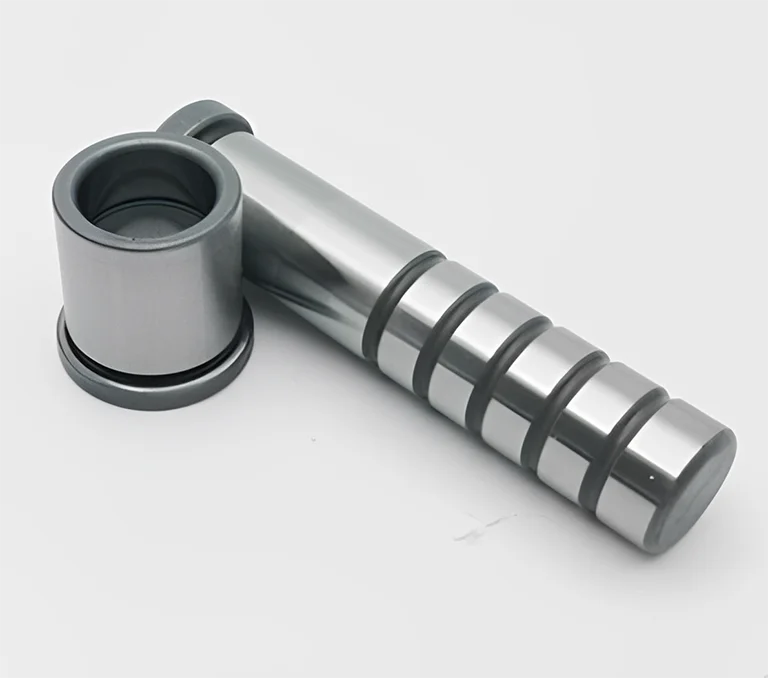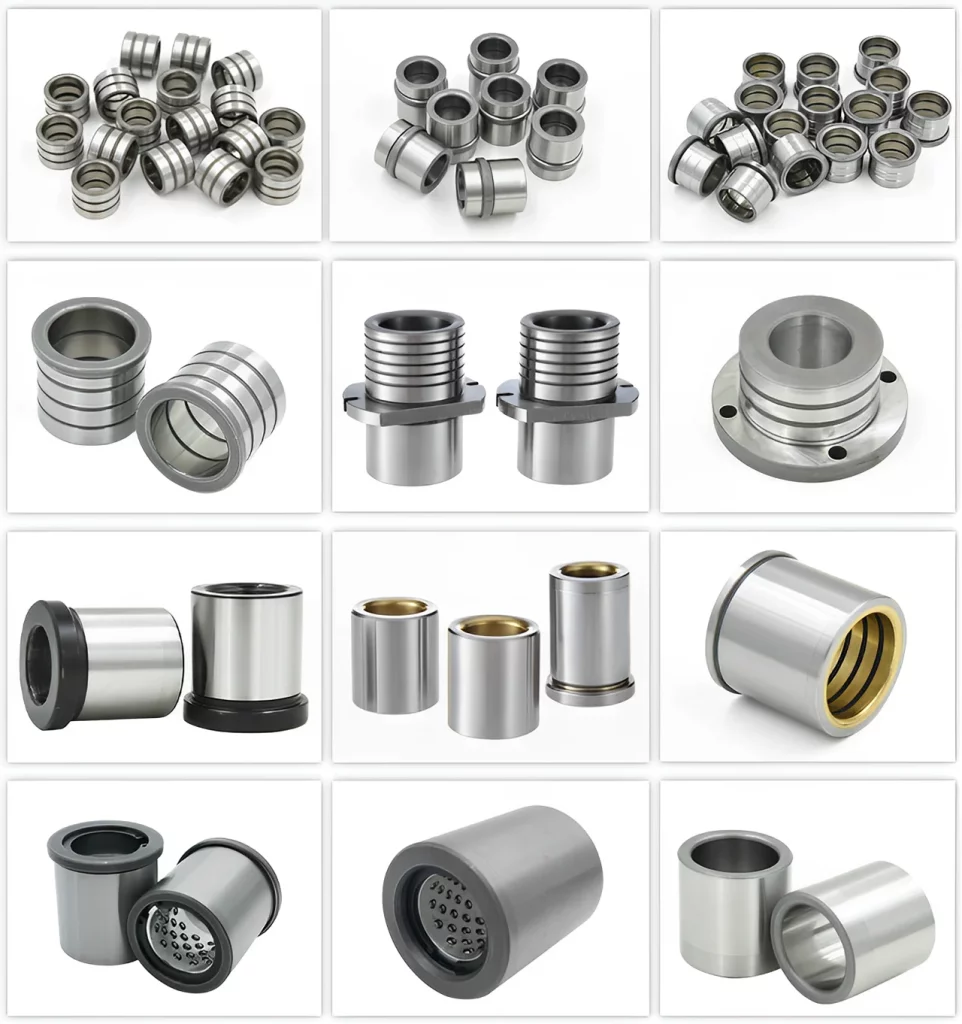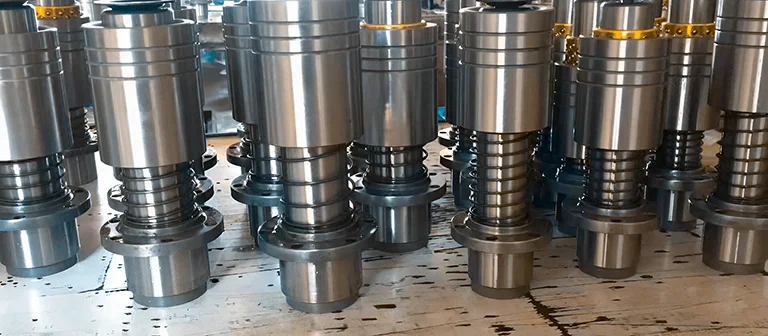In injection molding, a guide bushing, also known as a guide pin bushing or guide sleeve, is a component used in the injection molding process to guide the movement of the mold halves or components within the mold. It provides support and precise alignment to ensure accurate and repeatable mold operation.
Different things need to be considered guide bushing when using an injection molding machine for quality production. Let’s go ahead and explore all about it below in detail.
Guide Bushing Function and Location:
The injection mold guide bushing is an extremely vital feature of modern parts processing and one of the most critical parts of the current injection mold production process. Its advantageous properties have been widely applied in various industries, including machinery and vehicle manufacture.
A guide bush is typically installed in one half of the injection mold, usually the stationary half or the “A-side” of the mold. It guides the moving half or the “B-side” of the mold, ensuring proper alignment during mold closing and opening. The guide bush guides the mold halves to achieve precise alignment and prevent any misalignment that could cause damage to the mold or affect part quality.
Also Read: 2 Plate Mold or 3 Plate Mold: The Difference

Moreover, the role of the guide bushing in the injection mold is to guide. The injection mold’s guide device has to guide the upper and lower molds into the correct position.
The guide bushing and guide pin are the most frequent guide devices. A large injection mold may also be outfitted with a guide plate. On the other hand, a micro die may be outfitted with a guide tube, serving the same purpose as the guide sleeve pin and guide bushing.
Design and Manufacturing of a Guide Bushing in Injection Molding:
The design and construction of guide bushings require careful attention to material selection, dimensional accuracy, surface treatments, and manufacturing processes. By considering these factors, guide bushings can provide precise alignment, minimize friction and wear, and contribute to the efficient and reliable operation of the injection molding process. Here’s how the process unfolds:
● Material Selection:
Guide bushings are typically made of hardened steel or other materials with high wear resistance. Common materials include tool steels (D2 or M2), stainless steels, or bronze alloys. The material choice depends on factors such as the molding process, molding materials, expected loads, and temperature conditions.
● Shape and Dimensions:
Guide bushings are cylindrical with a smooth internal bore and external surface. The dimensions of the guide bushing are carefully determined to accommodate the corresponding guide pins or guide posts. The internal diameter (ID) is designed to provide a precise fit with minimal clearance to ensure accurate alignment.
● Lubrication Features:
Guide bushings often include lubrication features to minimize friction and wear. These features may include oil grooves or pockets on the inner surface to hold lubricant and facilitate its distribution between the guide bushing and guide pins. Lubrication helps reduce friction, heat generation, and wear during mold operation.
● Surface Treatment:
Guide bushings may undergo surface treatments to enhance wear resistance and minimize friction. Common treatments include heat treatment processes like carburizing, nitriding, or induction hardening to increase hardness and wear resistance. Additionally, surface coatings like TiN (titanium nitride) or DLC (diamond-like carbon) can improve surface properties.
● Accuracy and Tolerance:
The manufacturing process of guide bushings requires high precision to achieve accurate alignment. Tight tolerances are maintained for the internal and external diameters to ensure a proper fit with the guide pins and within the mold. The guide bushing’s concentricity and straightness are critical for achieving precise mold alignment.
● Machining and Finishing:
Guide bushings are typically manufactured using machining processes such as turning, drilling, and grinding. Machining ensures the desired dimensions, tolerances, and surface finish. The external surface may undergo polishing or grinding to provide a smooth finish, allowing for smooth movement of the mold halves.
● Inspection and Quality Control:
Guide bushings undergo a rigorous inspection to ensure their quality and adherence to specifications. Dimensional measurements, surface quality checks, and hardness testing are typically performed to verify the quality and accuracy of the guide bushings.

Choosing the Right Material for Manufacturing Guide Bushing:
The material of the guide bushing is generally picked from bearing steel, hot work dies steel, easy-cut iron, etc., and bearing steel SUJ2 material is used extensively. This significantly improves the guide bushing’s longevity and interchangeability regarding its guiding performance.
The guide bushing and its components consist of the outer component and the innercomponent. Both of these guide bushing components have a stunning metallic sheen.
There are stringent criteria regarding the roundness of the guiding bushing.
When cylindrical grinding the outer diameter, align the center hole to spin the guide bushing grind. The center hole is mostly utilized when grinding the outside diameter.
In most cases, the angle of the inclined guiding bushing of the injection mold will be either 20 or 25 degrees. These are the two possible inclination angles. The temperature of 20 degrees is the standard.
Use the 25 degrees’ if the distance of the sliding block is slightly longer than what you expected. If the distance is greater, hydraulic or pneumatic means are required to complete the task.
A high dimensional tolerance and a low surface roughness rating may be found on the exterior surface of the cylinder. To achieve the desired Ra value, ensure consistency in processing stages, machine tool selection, and cutting parameter management with the inner cylindrical surface.
In addition, the sequence of operations in the process goes as follows: rough turning, semi-finishing turning, rough grinding, and fine grinding.
Also Read: High-Precision Plastic Injection Molding – 5 Things You Should Know!

6 Drawbacks of a Guide Bushing’s Poor Manufacturing:
If a guide bushing is not manufactured correctly or has issues with its design or construction, several problems can arise in the injection molding process. Here are some issues that can occur if a guide bushing is not manufactured right:
1. Misalignment of Mold Halves:
A poorly manufactured guide bushing can result in a misalignment of the mold halves. This misalignment can lead to uneven distribution of the plastic material, causing defects such as flashes, short shots, or incomplete mold cavity filling. Misalignment can also result in excessive wear or damage to the mold and guide components.
2. Increased Friction and Wear:
If the dimensions or surface finish of the guide bushing are not properly controlled, it can lead to increased friction and wear between the guide bushing and guide pins. This can result in accelerated bushing wear, causing dimensional inaccuracies, reduced lifespan, and potential damage to the mold and other components.
3. Binding or Sticking:
A guide bushing not manufactured with the correct tolerances or an inadequate surface finish can bind or stick the mold halves during the opening and closing cycles. This can lead to difficulties in mold operation, increased cycle times, and potential damage to the mold or guide components.
4. Excessive Clearance:
If the guide bushing is manufactured with excessive clearance between the guide pins, it can increase movement and play. This can lead to poor mold alignment, reduced part precision, and increased wear and damage to the mold. Excessive clearance can also contribute to mold noise and vibrations.
5. Inconsistent Part Quality:
A guide bushing that is not manufactured correctly can result in inconsistent part quality. Misalignment or excessive wear caused by a faulty guide bushing can lead to variations in part dimensions, surface defects, or poor part aesthetics. Inconsistent part quality can impact product functionality and customer satisfaction.
6. Increased Maintenance and Downtime:
A poorly manufactured guide bushing may require more frequent maintenance and replacements. Excessive wear, misalignment, or binding issues can result in increased downtime for mold adjustments, repairs, or replacement of guide bushings. This can disrupt production schedules, increase costs, and decrease overall productivity.
To mitigate these issues, it is crucial to ensure that guide bushings are manufactured with precise dimensions, appropriate tolerances, and high-quality materials. Regular inspection, maintenance, and replacement of guide bushings are necessary to minimize wear, prevent misalignment, and ensure the smooth operation of the injection molding process.
Conclusion:
Using an effectively manufactured guide bushing is essential for maintaining the precision and reliability of the injection molding process. The guide bushing ensures proper mold alignment, minimizing defects and inconsistencies in the molded parts.
Reducing friction and wear prolongs the lifespan of the mold and guide components, saving on maintenance costs and downtime. Moreover, an effectively manufactured guide bushing facilitates efficient mold operation, increasing productivity and ensuring consistent production output.
Overall, it plays a critical role in achieving high-quality parts, optimizing production efficiency, and maximizing the overall performance of the injection molding process.










